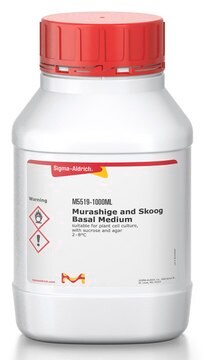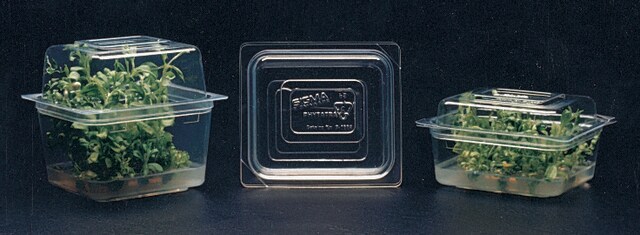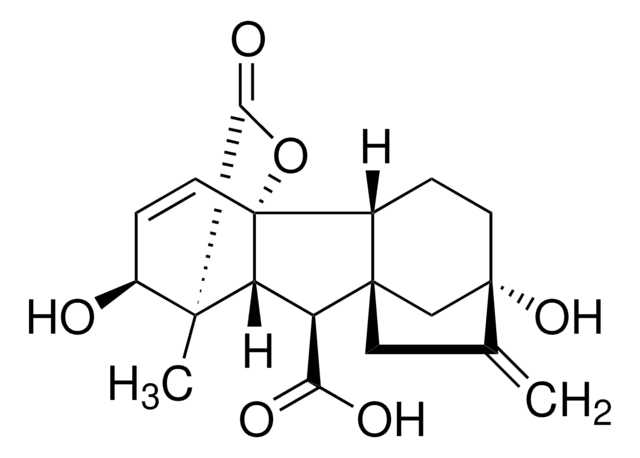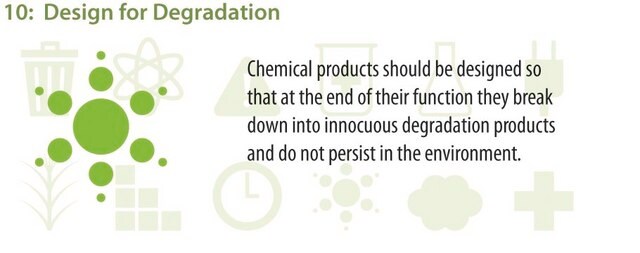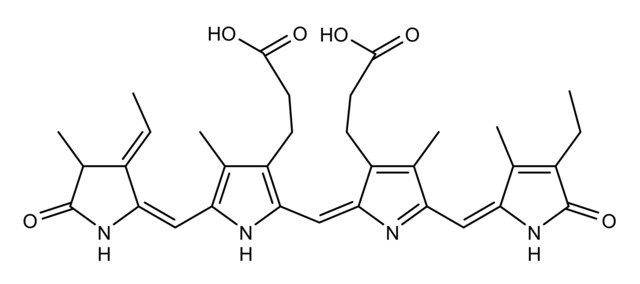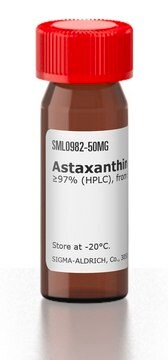V9389
Violacein
from Janthinobacterium lividum, >98% (violacein (minimum 85% violacein) and deoxyviolacein, HPLC), powder, anticancer
About This Item
Recommended Products
Product Name
Violacein from Janthinobacterium lividum, >98% (violacein (minimum 85% violacein) and deoxyviolacein, HPLC)
Quality Level
Assay
>98% (violacein (minimum 85% violacein) and deoxyviolacein, HPLC)
solubility
H2O: insoluble
acetone: soluble
ethanol: soluble
methanol: soluble
storage temp.
2-8°C
InChI
1S/C20H13N3O3/c24-10-5-6-15-12(7-10)14(9-21-15)17-8-13(19(25)23-17)18-11-3-1-2-4-16(11)22-20(18)26/h1-9,21,24H,(H,22,26)(H,23,25)/b18-13-
InChI key
XAPNKXIRQFHCHN-AQTBWJFISA-N
General description
Application
- for cell culture assays
- as a standard to determine the crude violacein concentration in ethanol extracts of D. violaceinigra str. NI28 cultures
- as a standard to identify violacein in the leaf samples of Nicotiana
Biochem/physiol Actions
Storage Class Code
11 - Combustible Solids
WGK
WGK 3
Flash Point(F)
Not applicable
Flash Point(C)
Not applicable
Personal Protective Equipment
Choose from one of the most recent versions:
Already Own This Product?
Find documentation for the products that you have recently purchased in the Document Library.
Customers Also Viewed
Our team of scientists has experience in all areas of research including Life Science, Material Science, Chemical Synthesis, Chromatography, Analytical and many others.
Contact Technical Service

